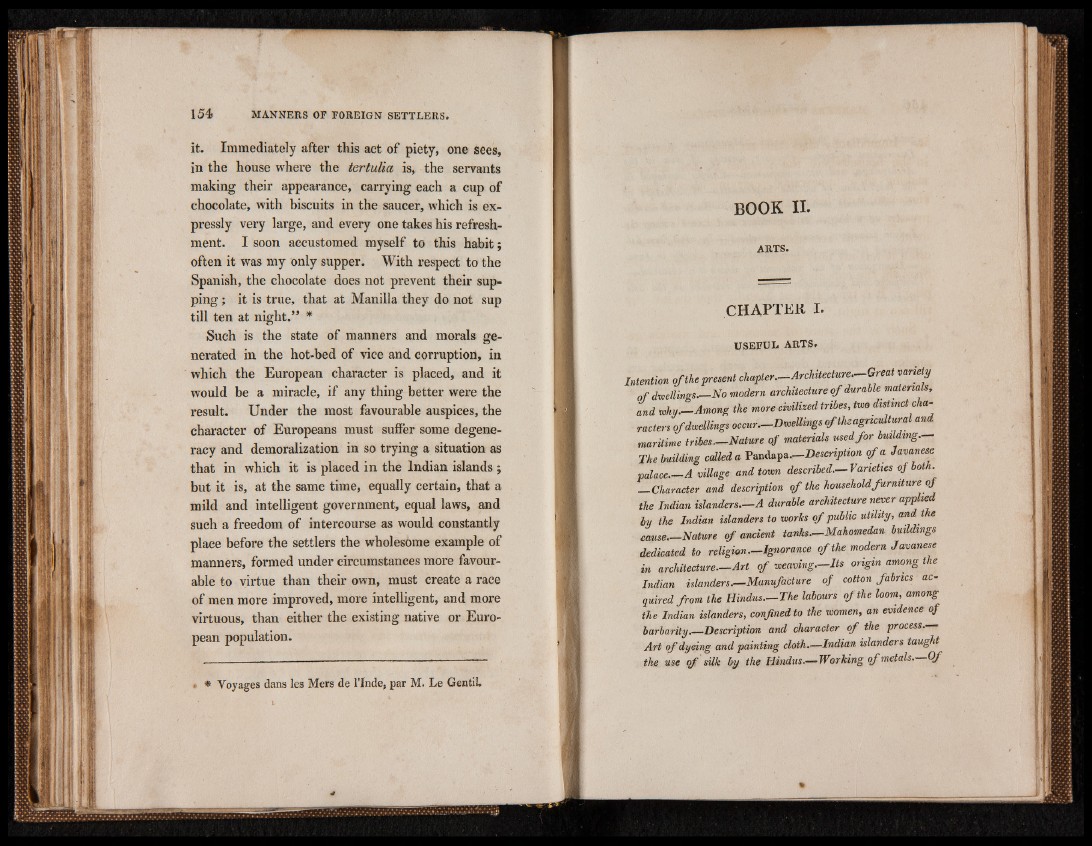
it. Immediately after this act of piety, one sees,
in the house where the tertulia is, the servants
making their appearance, carrying each a cup of
chocolate, with biscuits in the saucer, which is expressly
very large, and every one takes his refreshment.
I soon accustomed myself to this habit;
often it was my only supper. With respect to the
Spanish, the chocolate does not prevent their supping
; it is true, that at Manilla they do not sup
till ten at night.” *
Such is the state of manners and morals generated
in the hot-bed of vice and corruption, in
which the European character is placed, and it
would be a miracle, if any thing better were the
result. Under the most favourable auspices, the
character of Europeans must suffer some degeneracy
and demoralization in so trying a situation as
that in which it is placed in the Indian islands ;
but it is, at the same time, equally certain, that a
mild and intelligent government, equal laws, and
such a freedom of intercourse as would constantly
place before the settlers the wholesome example of
manners, formed under circumstances more favourable
to virtue than their own, must create a race
of men more improved, more intelligent, and more
virtuous, than either the existing native or European
population.
. * Voyages dans les Mers de l’lnde, par M. Le GentiL
BOOK II.
ARTS.
CHAPTER I.
U SEFU L ARTS.
Intention o f the present chapter— Architecture— Great variety
o f duellings.—No modern architecture o f durable materials,
and why.—Among the more civilized tribes, two distinct characters
o f dwellings occur.-Dwellings o f the agricultural and
maritime tribes— Nature of materials used f o r building—
The building called a P an d ap a . Description o f a Javanese
palace— A village and town described— Varieties o f both.
— Character and description o f the household furniture of
the Indian islanders— A durable architecture never applied
by the Indian islanders to works o f public utility , and the
cause— Nature ( f ancient tanks— Mahomedan buildings
dedicated to religion— Ignorance o f the modern Javanese
in architecture— Art o f weaving— Its origin among the
Indian islanders— Manufacture of cotton fabrics acquired
from the Hindus— The labours o f the loom, among
the Indian islanders, confined to the women, an evidence of
barbarity Description and character o f the process—
A rt o f dyeing and painting cloth.—Indian islanders taught